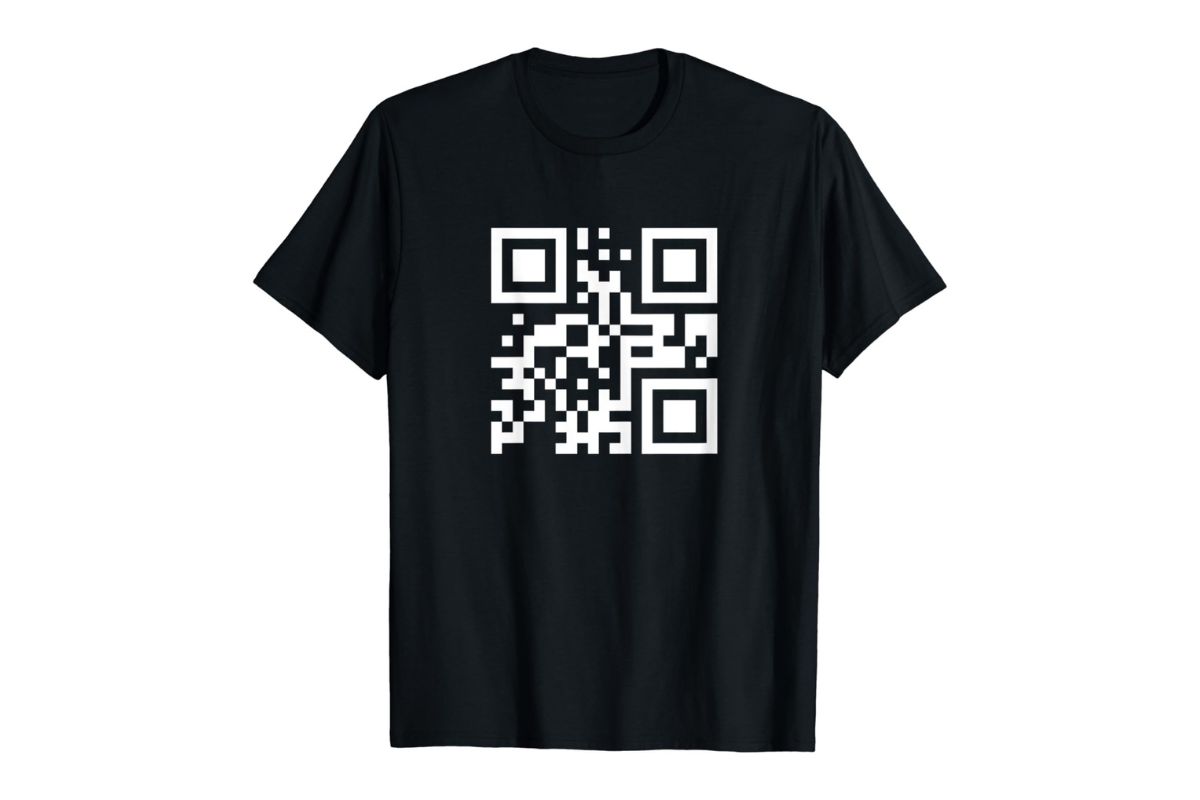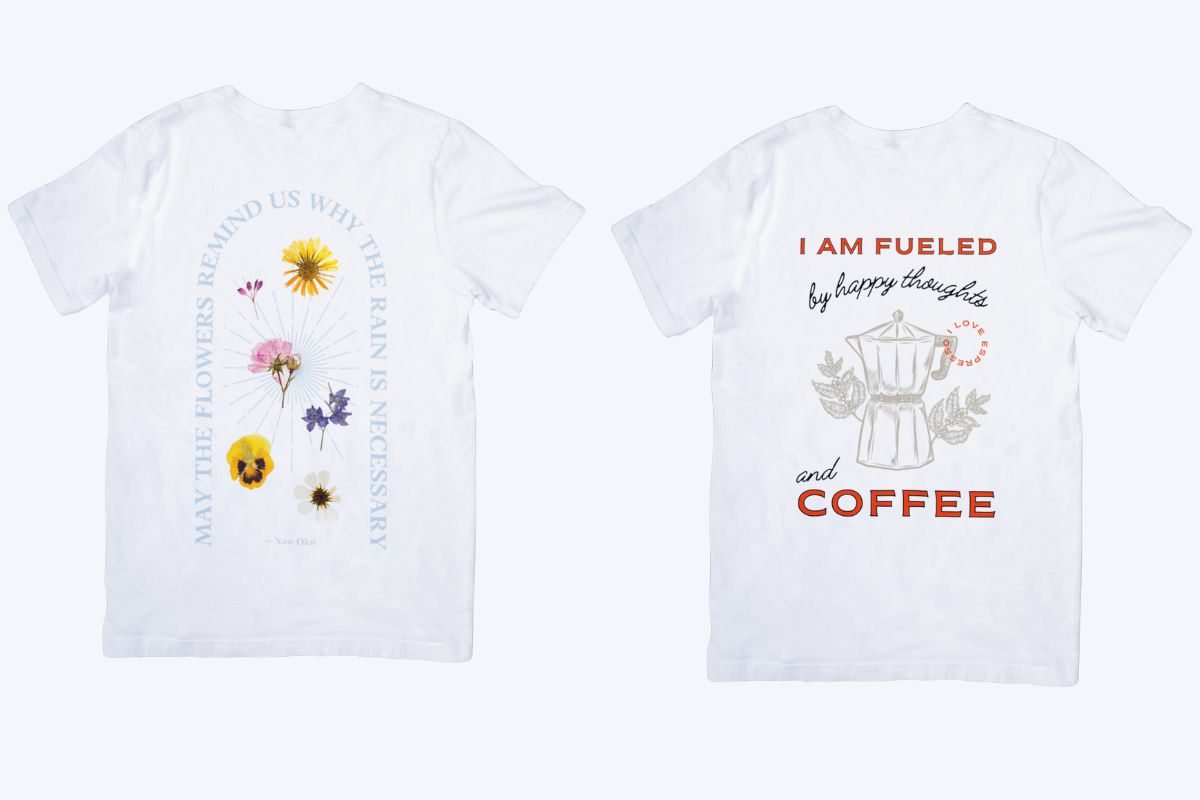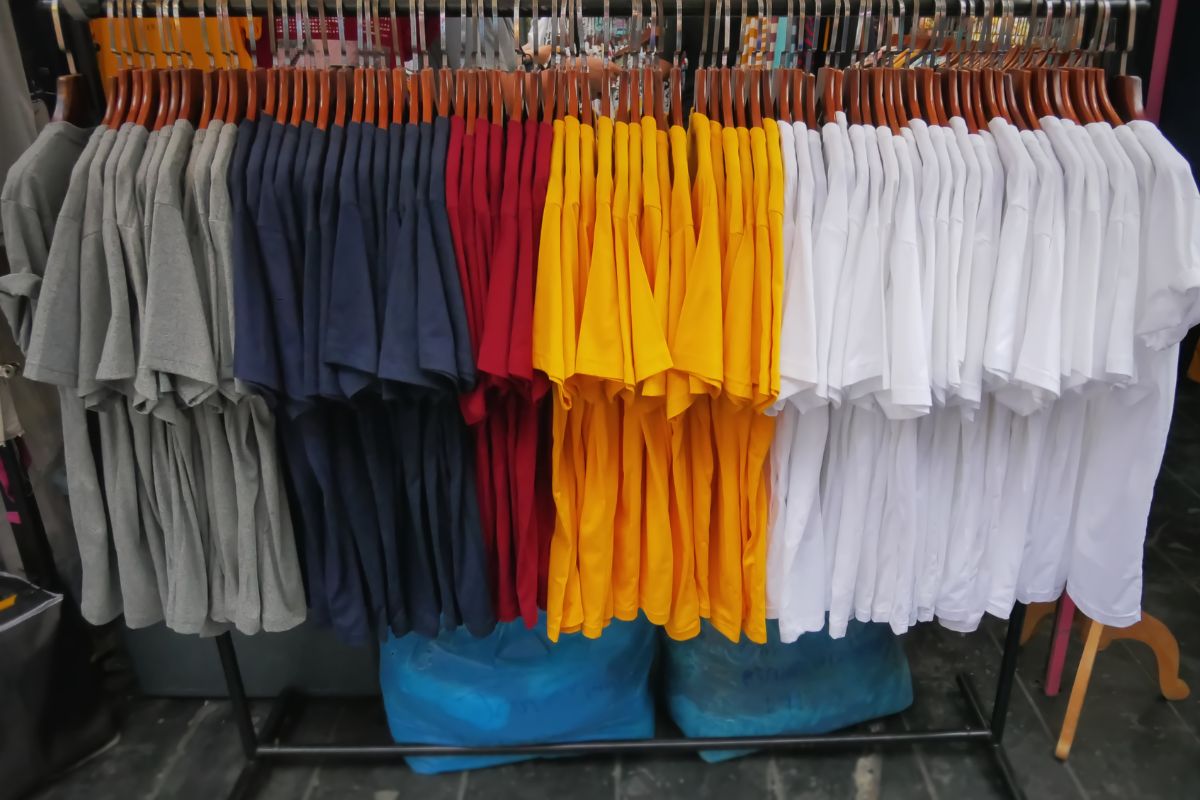Integrating QR codes onto shirts is a practical and innovative method to merge fashion with technology. QR codes allow for a seamless connection between physical items and the digital world, thereby providing a wealth of possibilities for interaction and engagement. Whether it’s for personal use, marketing, or event promotion, having a QR code on your shirt can link anyone who scans it to a webpage, multimedia content, or social media platforms.
The process of adding a QR code to a shirt involves choosing the appropriate method, such as heat transfer or screen printing, to ensure durability and scanability. It’s important to use a high-quality QR code generator to create the code, focusing on clarity and contrast to maintain its functionality. When designing your QR code shirt, placement and size are critical factors to consider so that the code is easily visible and accessible for scanning.
Understanding QR Codes
QR codes or Quick Response Codes, have revolutionized the way you interact with brands and information through technology. Here’s how you can grasp the essentials of QR codes.
QR Code Basics
At its core, a QR code is a two-dimensional barcode that can store a wide array of information. Unlike traditional barcodes, which are one-dimensional and hold about 20-25 characters, QR codes can hold thousands of characters of information. This technology allows for more complex and detailed data encoding. You can scan QR codes using a smartphone camera or a QR code reader, seamlessly connecting physical items to digital content.
Static vs Dynamic QR Codes
- Static QR Codes: Once created, the data within a static QR code cannot be changed. For example, if it encodes a URL, that URL will always lead to the same destination. Their permanence makes them ideal for applications where the information does not need to update.
- Dynamic QR Codes: These codes are editable, even after printing. They redirect the scan to a URL that can be changed, allowing you to update the information or destination without altering the QR code itself. Due to their flexibility, dynamic QR codes are useful for marketing campaigns or situations where the information may need periodic updates.
QR Code Scannability
For a QR code to function correctly, it must be scannable. Here are key factors that impact scannability:
- Size: Your QR code should be large enough to be read by a smartphone camera. A good rule is 1 centimeter in size for every 10 feet of scanning distance.
- Color Contrast: High contrast between the QR code and its background, usually black on white, is critical for readability.
- Placement: Make sure your QR code is placed in a flat and visible area. It should not be crumpled or folded, which could interfere with a smartphone camera’s ability to scan it.
- Printing quality: A high-resolution print helps to ensure that the QR code remains clear and scannable.
By considering these elements, you can maintain your QR code’s scannability and ensure a smooth user experience.
Designing QR for T-shirts
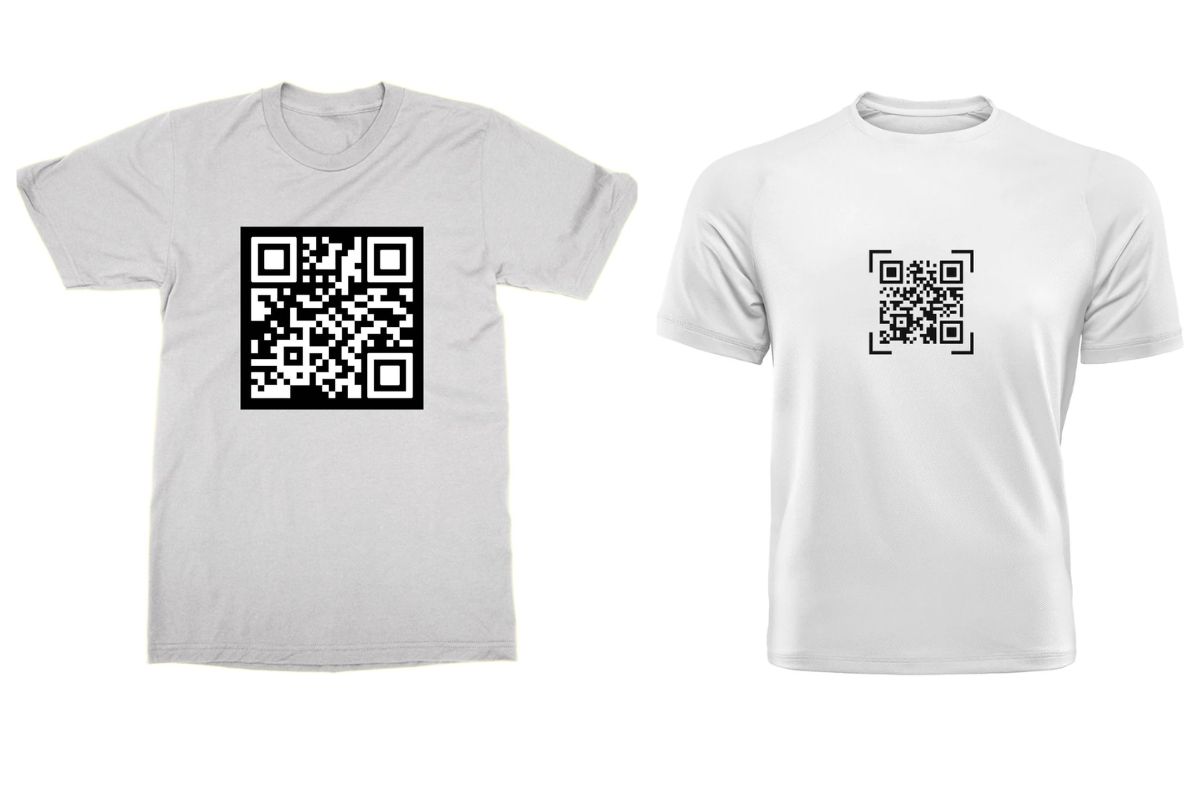
Implementing a QR code on a T-shirt involves key design factors to maintain scannability and visual appeal. You’ll balance aesthetics with functionality to ensure the QR code integrates well with your chosen fabric and fashion considerations.
Visual Considerations
Your QR code should complement the overall design of your T-shirt, whether it’s a standalone feature or part of a larger image. Choose colors that suit your brand or message, but avoid overly complex patterns that can detract from the QR code’s readability. Integrating your logo within the QR code can be effective, but ensure it doesn’t compromise the code’s integrity.
Contrast & Visibility
A high-contrast QR code is essential for readability. You typically want a dark-colored QR code on a light-colored shirt, or vice versa. For example:
| T-shirt Color | QR Code Color |
| White | Black |
| Yellow | Dark Blue |
| Light Grey | Black |
Ensure the code stands out without clashing with the rest of the T-shirt’s design.
QR Code Size and Placement
The size of the QR code on your T-shirt should be large enough to be scanned easily – typically no smaller than 1.2 inches (3 cm) for simplicity. As for placement, common areas include:
- Center chest
- Back, shoulder-blade area
- Lower hem
- Sleeve
Choose a spot that’s easily accessible and not prone to warping when worn, as distortion can render QR codes non-functional.
Creating QR Codes
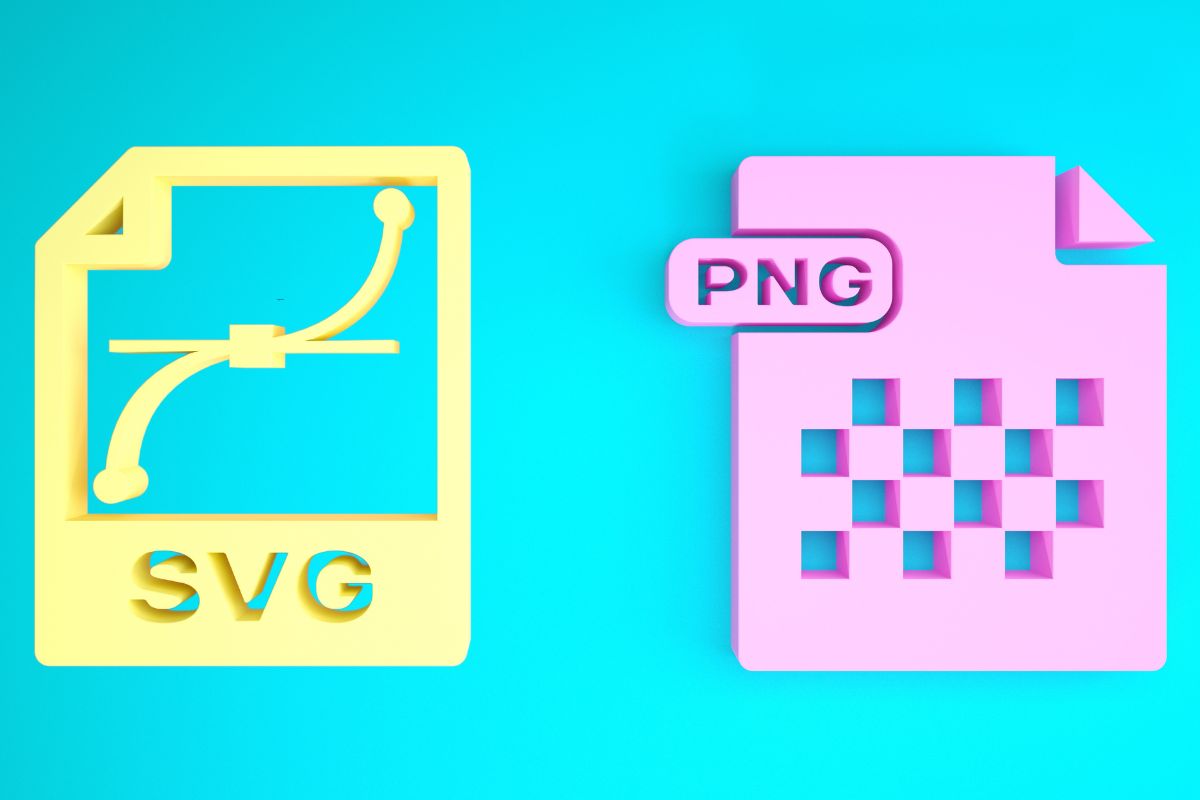
To successfully integrate QR codes onto a shirt, you need to navigate through creation, customization, and understanding the advantages of dynamic QR codes, ensuring the content remains accessible and engaging.
Using QR Code Generators
To create a QR code, you can use an array of QR code generators available online. Select a generator that offers both standard and customization features. Enter the URL or data you wish to encode, and the generator will create a QR code for you in a vector format such as SVG, which is ideal for printing due to its scalability, or in raster formats like PNG or JPEG, which are widely supported image types.
- Vector format: SVG (Scalable Vector Graphics)
- Raster format: PNG (.png), JPEG (.jpeg)
Customization Options
Customization is crucial to making your QR code stand out on a shirt. Many generators offer the ability to modify the appearance of your QR code. You can:
- Change colors: Match the code with your shirt color scheme, but ensure contrast for readability.
- Add logos or images: Embed your brand’s logo to enhance brand recognition.
- Modify shapes: Alter the pattern of the squares to create a unique look.
Remember to keep the QR code’s contrast high and its central area clear to maintain scanability.
Dynamic QR Code Benefits
Dynamic QR codes offer significant benefits over static ones, especially for printed materials like shirts. They allow you to:
- Edit the URL or content: Update the linked content without needing to reprint the QR code.
- Track scans and metrics: Integrate with platforms like Facebook or Google Analytics to monitor engagement.
- Create campaigns: Adjust the linked content based on the campaign’s performance in real-time.
Using dynamic QR codes provides longevity for your shirt’s interactivity and continuous engagement with your audience.
Printing QR Codes on T-shirts
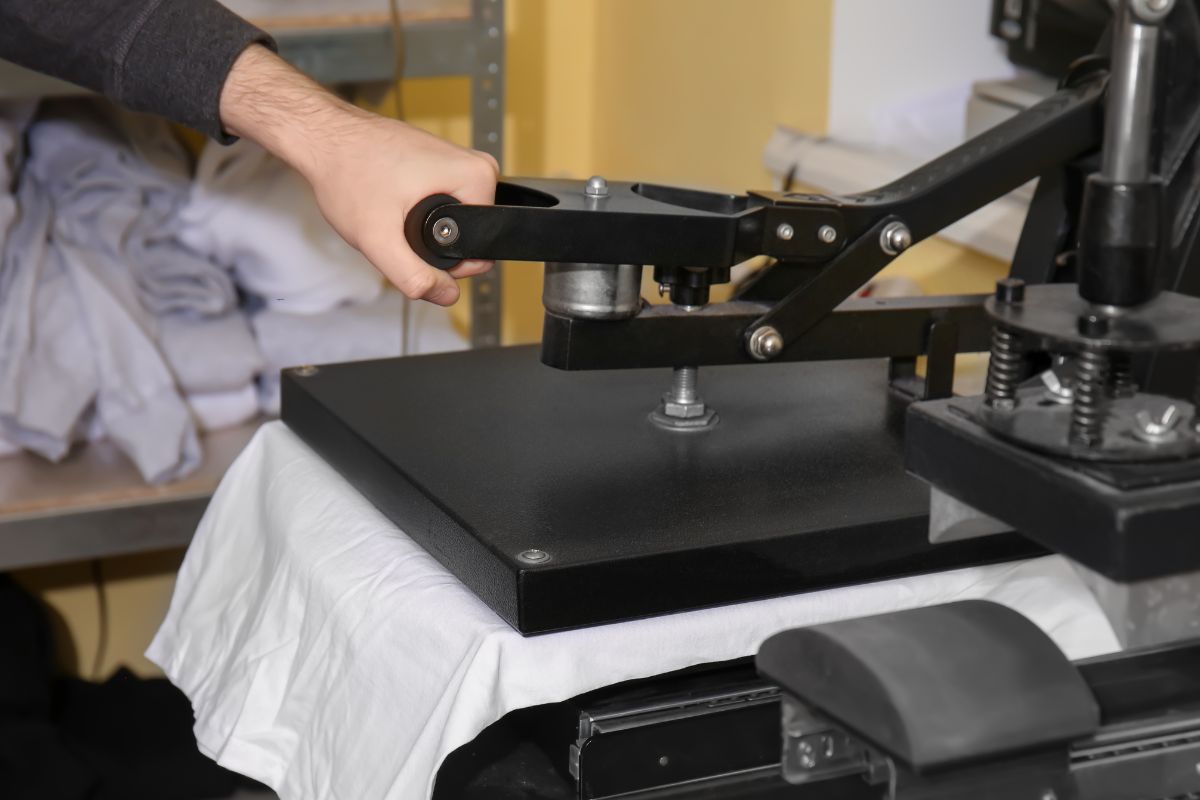
Printing a QR code on a T-shirt involves choosing the right printing method to ensure the code is scannable and maintains its integrity through washing and wearing. Not all printing techniques may be suitable, especially when precision is key.
Heat Transfer Printing
In heat transfer printing, heat applied transfers are a common solution for printing QR codes on T-shirts. One of the transfer types, UltraColor Max, is used for vibrant full-color designs, while UltraColor Pro offers a softer hand and stretchability. These methods ensure accurate reproduction of the complex QR code patterns. Goof Proof transfers are also an option, known for their ease of use.
Screen Printing Method
Screen printing is a more traditional approach where ink is pushed through a woven screen onto the fabric. When printing QR codes, it’s necessary to pay attention to the fine details. A high-quality screen printed transfer where the QR code is pre-printed onto the transfer papers before transferring onto the T-shirt is advisable to maintain the integrity of the QR code.
Direct-to-Garment & Dye Sublimation
Direct-to-garment printing (DTG) applies ink directly onto the T-shirt using an inkjet printer, suitable for intricate designs and QR codes. Dye sublimation is another technique best for polyester T-shirts, where the dye turns into a gas and bonds with the fabric, resulting in a durable and precise print. However, both methods usually work best on light backgrounds to ensure QR code scannabilitity.
Remember, the size of the QR code is crucial, too small and it won’t be scannable; too large, and it may dominate the design unnecessarily. The placement on the T-shirt should also be considered to allow for easy scanning by smartphones.
Marketing with QR Coded T-shirts
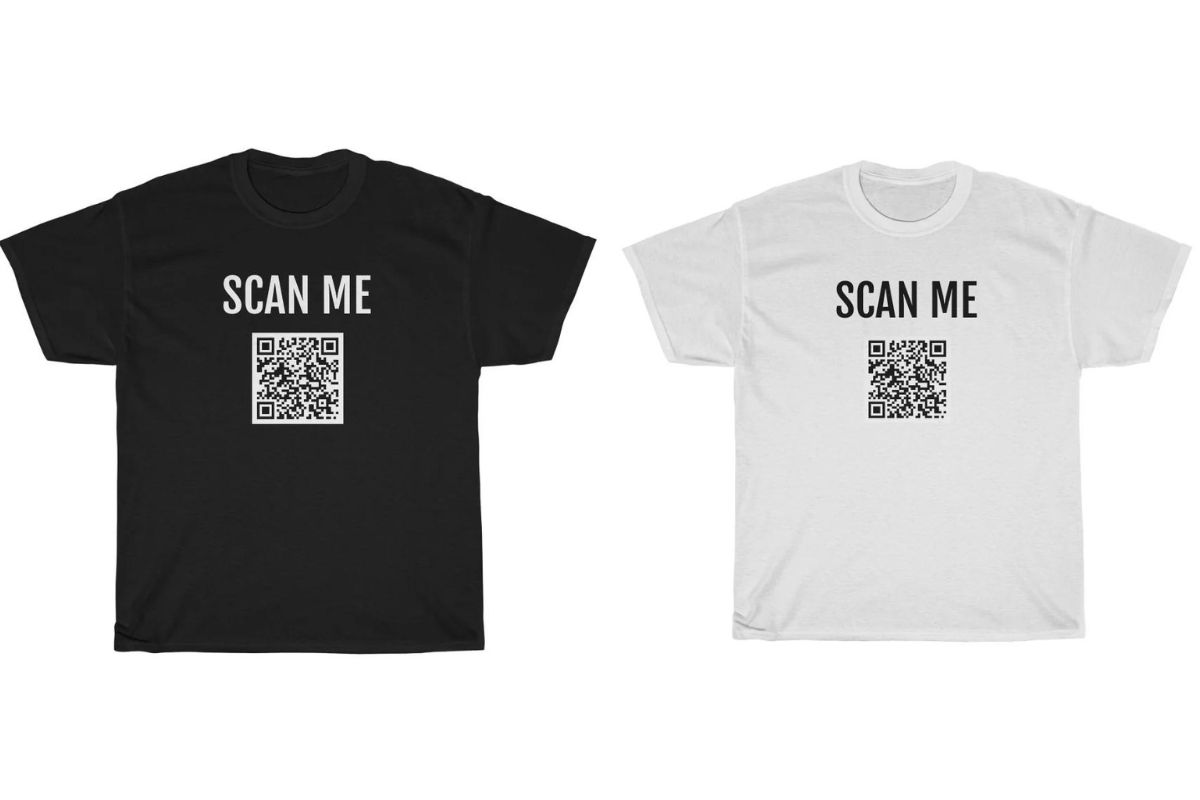
QR coded T-shirts are a savvy marketing tool that can amplify your promotional efforts and streamline tracking. These wearable advertisements provide a unique way to engage customers and analyze campaign effectiveness.
Promotional Use Cases
QR codes on T-shirts are versatile for marketing purposes. You can use these codes to directly promote an upcoming event or product launch by embedding a website URL or specific details about the promotion. For instance, at a trade show or corporate event, your staff wearing QR coded apparel can pique interest, prompting attendees to scan the code and learn more about your business. Such T-shirts can also feature QR codes directing to exclusive offers or content, thereby not only serving as a walking billboard but also adding a layer of interactivity to your advertising strategy.
Tracking and Analytics
By integrating a dynamic QR code with a service like Google Analytics, you can track how effective your T-shirt marketing campaigns are. This involves monitoring scans, user location, time spent after the scan, and conversion rates. Such data becomes invaluable as it helps optimize your marketing efforts. To facilitate tracking, ensure the QR code on your T-shirt links to a trackable landing page or asset. This process equips you with concrete analytics needed to measure return on investment and understand customer behavior.
Social Media Integration
Incorporating social media QR codes on T-shirts can bolster your online presence. These QR codes should link directly to your social media profiles or specific campaigns within those platforms. When individuals scan the QR code, they can instantly follow your page, join a community, or participate in a social media driven promotion. This tight integration creates a seamless bridge between your physical merchandise and digital spheres. Consequently, harnessing the power of social media with QR coded T-shirts provides a means to grow your follower base and foster digital interactions.
Enhancing Interactive Experience
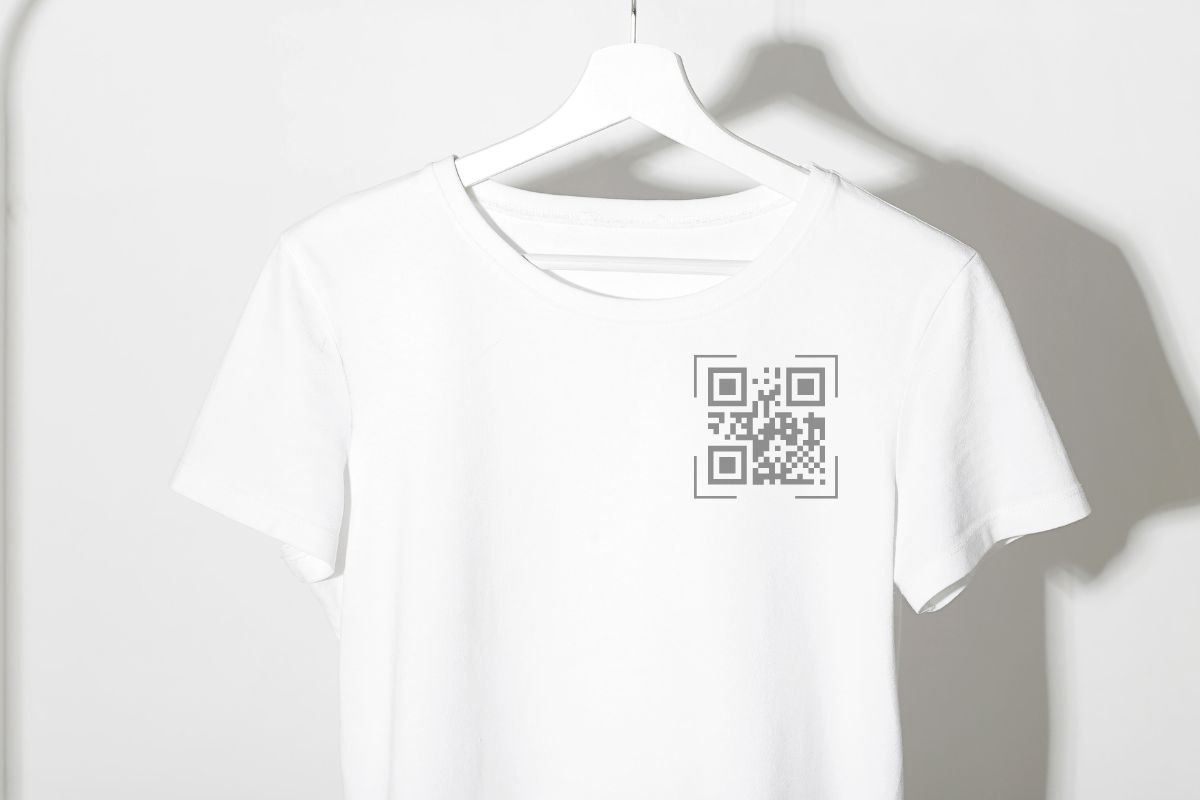
Integrating a QR code into your shirt design can significantly elevate the interactivity and engagement for the wearer. By turning a simple garment into a portal for digital content, your promotional shirts become more than apparel—they transform into interactive tools that bridge the physical and digital spaces.
Augmented Reality Integration
Using augmented reality (AR) in conjunction with QR codes on clothing creates an immersive experience for your audience. For instance, when you scan a QR code with your smartphone, it can unlock an AR feature allowing you to view a model wearing the item in a virtual space. This gives you a realistic preview of how the clothes fit and move, akin to a virtual catwalk. AR can also facilitate virtual try-ons, where you can see how the clothes would look on yourself through the phone’s screen, providing an instant and personalized experience.
Example of AR Features via QR Code:
- Virtual Try-On: View clothes on yourself in real-time using your device’s camera.
- 3D Views: Rotate and inspect clothing in a 3D space to understand the texture and fit.
- Product Information: Access detailed information about the fabric, care instructions, and more.
Engaging Content
The QR codes on your shirts can link to engaging, brand-related content such as videos, which can evoke stronger connections with your wearers. Whether it’s a video revealing the making of your product or a sneak peek into your brand’s upcoming schedule, you can use this interactive touchpoint to deepen the wearer’s relationship with your brand. By embedding a direct link to your online store, the QR code also facilitates instant access to your full product range, making it easy for satisfied customers to explore and potentially purchase on the spot. Additionally, integrating a feedback loop through the QR can capture real-time opinions and experiences from users, enhancing your understanding of your audience’s preferences.
Content Ideas for QR Code Integration:
- Behind-The-Scenes Videos: Provide an exclusive look into your brand’s production process.
- Access to Schedules: Keep your audience in the loop with event dates and new product launches.
- Direct Store Link: Offer a hassle-free way to shop your collection immediately.
- User Feedback: Gain valuable insights directly from your customers’ experiences.
Distributing and Using QR Coded T-shirts

QR coded T-shirts offer a unique and interactive experience at events, making distribution straightforward and enhancing audience engagement. Used effectively, they can serve as a walking billboard for your cause or band, providing additional information with just a scan.
Events and Distribution
At events, your distribution strategy is key. Consider the following:
- Schedule: Announce the distribution of QR coded T-shirts according to the event schedule to maximize reach.
- Location: Clearly identify where attendees can collect their T-shirts; high foot-traffic areas work best.
- Method: Offer the T-shirts as free swag for early birds, rewards for event participation, or merchandise for sale.
- Contact Information: Ensure that your staff or volunteers are easily identifiable and equipped with contact details for queries.
User Engagement Tips
To maximize user engagement with QR coded T-shirts, keep in mind:
- Visibility: Ensure the QR code is printed in a size that’s easily scannable from a reasonable distance.
- Instructions: Provide clear, concise instructions on how to scan the QR code; not everyone may be familiar with the process.
- Content: Link the QR code to dynamic content that’s valuable, such as exclusive behind-the-scenes footage for a band or detailed information about a cause.
- Feedback: Encourage users to share their experience with the T-shirt on social media, creating a ripple effect of engagement.
Frequently Asked Questions
When incorporating a QR code into your T-shirt design, it’s essential to focus on visibility and scannability to ensure functionality.
How can you incorporate a QR code into a T-shirt design?
You can integrate a QR code onto a T-shirt by selecting an accessible location like the chest or back, which offers flat surfaces for easy scanning. The QR can act as a statement piece or be subtly woven into the overall graphic.
What are the best practices for printing a QR code on fabric?
Use high-contrast colors between the QR code and the shirt fabric for clarity. Ensure the print quality is high so that every pixel of the code is distinct and sharp, which is critical for the code to be scannable.
Are there specific types of shirts that are better for QR code integration?
Smooth, flat-surfaced shirts without texture, like a fine cotton tee, provide the best canvas for a QR code since they allow for the crisp printing necessary for the code to function properly.
Can QR codes be effectively scanned on a curved surface like a sleeve?
QR codes can be scanned on slightly curved surfaces such as sleeves, provided the curve doesn’t distort the code too much. However, flatter surfaces are preferable for ensuring consistent scannability.
What steps should be taken to ensure a QR code remains scannable after repeated washing?
To maintain a QR code’s integrity through multiple washes, choose durable print methods like screen printing and advise following care instructions that prevent excessive wear, such as washing inside out on a gentle cycle.
How can one create a QR code that complements the aesthetics of clothing attire?
Design your QR code using colors and embellishments that match your clothing’s design scheme. Modern QR code generators also allow for customization, like adding a logo to the center, which can help the code blend seamlessly with the attire’s aesthetics.

